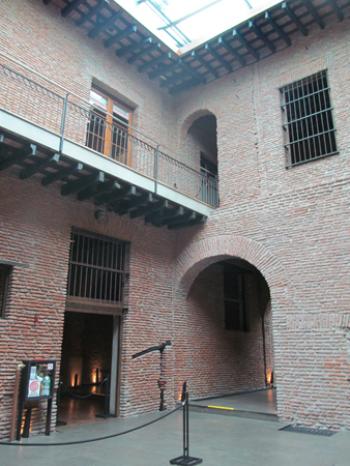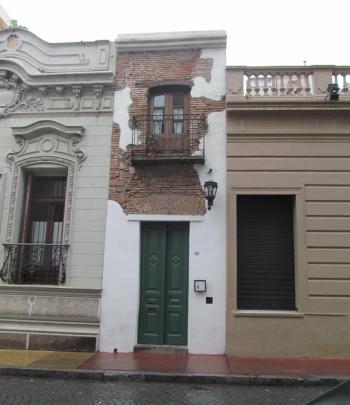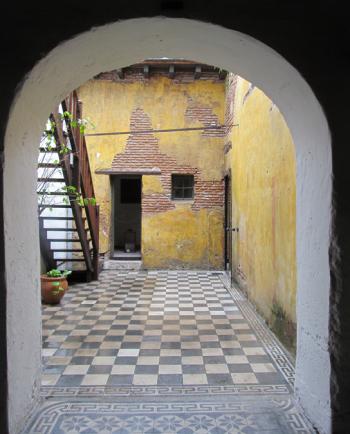Where Buenos Aires was born
This item appears on page 35 of the June 2020 issue.
Plaza de Mayo lies at the very heart of Buenos Aires. In 1535, King Carlos I of Spain sent the conquistador Pedro de Mendoza y Luján to establish a fort on the Río de la Plata in what was to become Argentina. This fort was the site of the settlement Mendoza called Santa María del Buen Aire, today’s Buenos Aires.
In 1580, another conquistador, Juan de Garay, moved the settlement a mile and a half from Mendoza’s site, awarding tracts of land to members of his expedition. Garay’s city plan for the new settlement centered on a main square, the Plaza de Mayo of today.
On this square now are found some of Buenos Aires’ most important buildings: the iconic Casa Rosada, the rose-colored presidential palace dominating one end of the long oblong plaza (the palace was “immortalized” by Evita Perón, first lady of Argentina from 1946 to 1952, as well as by Madonna, playing the film role of Evita); the Neoclassical-style Metropolitan Cathedral, where Argentina’s liberator from Spanish rule, General José de San Martín, lies buried in a huge sarcophagus in the nave of the church, and the Cabildo, one of the city’s oldest buildings, originally built at the end of the 16th century and rebuilt in the 18th century.
San Telmo
Less than a mile away from Plaza de Mayo lies the neighborhood of San Telmo, an area with its roots also in the 16th century. This is the likely location of the settlement Mendoza founded.
Here, at Defensa 755, is found one of Buenos Aires’ most important urban archaeological projects, El Zanjón de Granados. Almost five centuries of history come together here, thanks mostly to the dedication of an Argentinian engineer, Jorge Eckstein. I had visited El Zanjón previously (July ’15, pg. 55) and welcomed the opportunity to see it once again.
El Zanjón
Jorge Eckstein bought the dilapidated Defensa property in 1985, initially intending it for a restaurant. That was until excavations began that revealed layers of habitation stretching back to the late 16th century. At that time, two streams flowed beneath what became today’s streets. A map from 1580 shows that a dwelling once stood at the confluence of the two streams.
This early dwelling was replaced in the early 1800s by another with a tall lookout tower that still stands today. Then, in the 1830s and 1840s, a wealthy family replaced this structure with a mansion centered on three patios, with multiple rooms linked by corridors on several levels. They also kept the existing lookout tower.
In 1871, this family and most of their neighbors fled San Telmo when yellow fever struck. Most never returned, but newly arrived immigrants from Europe — mainly from Italy and Spain — moved into San Telmo. The once single-family homes were turned into tenements, housing stores and shops on the ground floor and dozens of families on the upper floors in warren-like apartments. These tenements were called conventillos.
However, by 1985 El Zanjón was once again abandoned, filled with rubbish until Eckstein resurrected the building.
Excavation results
In the course of his excavations, Eckstein discovered the now dried-up stream bed that had been contained by walls and later by vaulted brick tunnels.
Since the long-forgotten stream had also been a dumping ground for previous generations, it now became a treasure trove of articles from all eras of the site’s long history — tiles, African pipes, English china, cutlery, locally made pottery. . . .
Visitors to El Zanjón can now walk through a portion of the tunnels, examine the centuries-old artifacts and learn what life in Buenos Aires was like in its earlier days.
El Zanjón de Granados (Defensa 755, Buenos Aires, Argentina; phone +54 11 4361 3002, elzanjon.com.ar) can be visited only on a guided tour. Fifty-minute English tours are given at noon, 2 p.m. and 3 p.m. Monday to Friday, and half-hour tours are offered from 11 a.m. to 5:30 p.m. on Sunday; it’s closed Saturday. The cost is ARS1,000 (near $15) per person.
Casa Mínima
Across the street from El Zanjón, at Pasaje San Lorenzo 380, is a small gem of a house called Casa Mínima, bought by Jorge Eckstein in 1994. You can easily see why it’s called “mínima” the minute you look at its façade, which measures only 7½ feet, well deserving its name, Tiny House.
It, like El Zanjón, was in a sorry state when Eckstein purchased it, and it is now being restored. According to local legend, Casa Mínima was given to or bought by a freed slave, perhaps one of the slaves of the wealthy family who lived at El Zanjón before the yellow fever epidemic. The house has a lovely, small interior patio with an outside staircase leading to the upper story.
Adjacent to Casa Mínima is a large house that is also being restored by Eckstein. Once a grand mansion, it was abandoned during the epidemic and reoccupied afterward by European immigrants.
When I visited Casa Mínima, English tours were offered only once a week, on Friday at 3 p.m. They were 30 minutes long and included a look at the adjacent mansion being restored. Admission to Casa Mínima costs ARS600 per person. Call El Zanjón to check on tour times.
If you go…
For this latest trip to Buenos Aires, in August 2019, my husband, Paul, and I rented an apartment in Recoleta, the upscale area of the city where we have stayed on almost every one of our trips to the city.
Our apartment, located a 5-minute walk from one of our favorite cafés, La Biela, and from the city’s famous Recoleta Cemetery, was in a small residential building with a part-time doorman. It consisted of a charming living/dining room, a kitchen with a dining area, two bedrooms and 1½ bathrooms.
Amenities included good Wi-Fi, washer/dryer, a dishwasher and an elevator. Aside from the balcony overlooking our ground-floor neighbor’s carefully tended lush garden, best was the quiet, since the apartment was located at the back of the building.
We found the apartment through Airbnb; it was listed as “Charming Apartment in Recoleta.” For a stay of 32 days, we paid $3,403 — a bargain at $106 per day to be living in one of Buenos Aires’ most beautiful neighborhoods.



